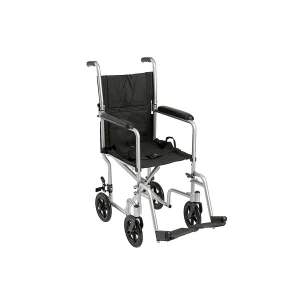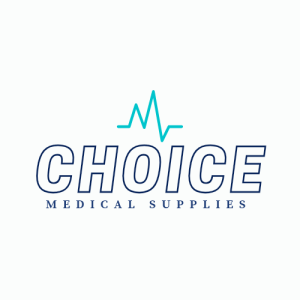 Why Medlabgear is the Best Place to Buy Wellness and Medical Supplies mobility Equipment!
Why Medlabgear is the Best Place to Buy Wellness and Medical Supplies mobility Equipment!
When it comes to purchasing medical equipment and supplies, Medlabgear stands out as a leader in the industry for several compelling reasons:
- Extensive Product Range: Medlabgear offers a comprehensive selection of wellness and medical supplies, including cutting-edge mobility equipment. From wheelchairs and hosits to state-of-the-art diagnostic tools, you can find everything you need in one place. Their diverse inventory ensures that all consumers can access the products required to meet their specific needs.
- Quality and Reliability: At Medlabgear, quality is a top priority. All products are sourced from reputable manufacturers and are rigorously tested to meet the highest standards. This commitment to quality ensures that every item, from mobility aids to medical devices, is reliable and effective, providing peace of mind to users.
- Expertise and Customer Support: Medlabgear prides itself on its knowledgeable staff who are experts in the field of medical supplies. Whether you need advice on choosing the right mobility equipment or assistance with a specific medical device, their team is ready to provide expert guidance.
What are the Examples of Mobility Equipment?
What is Mobility Equipment Called?
What are Health and Wellness Products?
Health and wellness products encompass a broad range of items designed to improve and maintain physical, mental, and emotional well-being. These products can include mobility equipment, aromatherapy oils, stress relief tools, and personal care items. They are tailored to enhance overall health, support the immune system, and promote a balanced lifestyle. Popular categories include medical supplies, surgical equipment, essential oils, mobility aids, and diagnostic gear. Each contributing to a holistic approach to wellness.
What are Medical Equipment and Accessories?
Medical equipment and accessories are essential tools used in healthcare settings to diagnose, monitor, and treat various medical conditions. This category includes items like diagnostic devices, surgical instruments, patient monitoring systems, and therapeutic apparatuses. Accessories might involve specialized attachments, replacement parts, or consumables like syringes and gloves. These products ensure the effective delivery of healthcare services, enhancing the capabilities of healthcare professionals and improving patient outcomes.
A Guide to Mobility Aids and Devices
Mobility aids and devices are designed to assist individuals with limited mobility due to age, disability, or injury. These products range from canes, crutches, and walkers to more advanced equipment like wheelchairs, scooters, and stair lifts. Mobility aids provide support, increase independence, and enhance the quality of life for users by enabling them to move more freely and safely. They are often tailored to meet specific needs, ensuring that users can navigate their environments comfortably and with confidence.
Senior Care Supplies
Senior care supplies cater to the unique needs of the elderly, focusing on improving their comfort, safety, and overall well-being. These supplies include incontinence products, mobility aids, bathing and grooming aids, and adaptive clothing. Additionally, senior care may involve nutritional supplements, medication organizers, and emergency alert systems. These products are designed to support the daily living activities of seniors, helping them maintain independence and a higher quality of life as they age.
Home Healthcare Products
Home healthcare products are designed for individuals receiving medical care in their homes rather than in hospital or clinical settings. These products include home-use medical devices like blood pressure monitors, glucose meters, nebulizers, and home dialysis equipment. They also encompass daily living aids such as grab bars, raised toilet seats, and bed assist rails. Home healthcare products enable patients to manage their health conditions comfortably at home, promoting convenience, privacy, and continuous care.
Rehabilitation Equipment
Rehabilitation equipment is used to aid in the recovery and improvement of physical function after injury, surgery, or illness. This equipment includes physical therapy tools like resistance bands, balance boards, exercise balls, and therapy machines like TENS units and ultrasound devices. Additionally, it covers supportive devices such as braces, splints, and orthotics. Rehabilitation equipment is essential for facilitating exercises and treatments that help restore mobility, strength, and flexibility, promoting faster and more effective recovery.
Assistive Living Tools
Assistive living tools are devices and gadgets designed to help individuals with disabilities or chronic conditions perform daily activities more easily and independently. These tools can include adaptive utensils, reachers, dressing aids, hearing amplifiers, and vision aids. They are intended to improve the quality of life by enabling users to carry out tasks that might otherwise be challenging. Assistive living tools are crucial for fostering self-sufficiency and enhancing the overall daily living experience for individuals with special needs.
What are Personal Care Products?
Personal care products are items used for maintaining personal hygiene and grooming. This category includes skincare products, hair care items, oral hygiene supplies, and bathing essentials. Examples are lotions, shampoos, toothpaste, razors, and deodorants. These products are fundamental to daily routines, helping individuals feel clean, refreshed, and well-groomed. High-quality personal care products often feature gentle ingredients and are designed to cater to various skin and hair types, ensuring overall health and well-being.
Medical Grade Supplies
Medical grade supplies refer to products that meet stringent regulatory standards for safety and efficacy in medical applications. These supplies include sterile gloves, surgical masks, wound care dressings, syringes, and IV kits. They are used in healthcare settings to ensure patient safety and optimal care during medical procedures. Medical grade supplies are manufactured to the highest quality standards, often undergoing rigorous testing to meet the requirements of healthcare professionals and regulatory bodies.
Durable Medical Equipment
Durable medical equipment (DME) includes long-lasting devices designed to provide therapeutic benefits to patients in need of medical care and support. Examples include hospital beds, oxygen concentrators, CPAP machines, wheelchairs, and mobility scooters. DME is typically used for managing chronic conditions or assisting with daily living activities. These products are built to withstand repeated use over time, offering reliability and durability in both home and clinical environments.
Disability Aids
Disability aids are devices and tools designed to assist individuals with disabilities in performing everyday tasks and improving their quality of life. These aids include items such as mobility scooters, adaptive kitchen tools, communication devices, and specialized computer software. Disability aids help bridge the gap between limitations and independence, enabling users to engage more fully in daily activities and social interactions. They are essential for promoting accessibility and inclusion.
Physical Therapy Equipment
Physical therapy equipment comprises tools and devices used by physical therapists to aid in the rehabilitation and recovery of patients with musculoskeletal conditions. This equipment includes exercise machines like treadmills and stationary bikes, resistance bands, therapy balls, balance trainers, and electrical stimulation devices. Physical therapy equipment is designed to improve strength, flexibility, balance, and coordination, helping patients regain mobility and function through targeted exercises and treatments.
Healthcare Solutions
Healthcare solutions refer to a broad spectrum of products, services, and technologies aimed at improving the delivery and quality of healthcare. This includes everything from medical devices and diagnostic tools to health IT systems, telemedicine services, and patient management software. Healthcare solutions are designed to enhance efficiency, accuracy, and patient outcomes in various healthcare settings. They address specific needs in prevention, diagnosis, treatment, and management of health conditions.
Elderly Mobility Aids
Elderly mobility aids are designed to support seniors in maintaining their independence and mobility. These aids include walking canes, rollators, wheelchairs, and electric scooters. Additionally, devices like stair lifts and grab bars fall under this category. Elderly mobility aids help reduce the risk of falls and accidents, making it easier for seniors to move around their homes and communities safely. They play a crucial role in enhancing the quality of life for the elderly by promoting freedom and confidence.
Patient Care Supplies
Patient care supplies encompass a variety of products used in the day-to-day care and management of patients. These supplies include items like bedpans, wound care products, incontinence products, hygiene wipes, and feeding tubes. They are essential for maintaining patient hygiene, comfort, and dignity. Patient care supplies are used in hospitals, nursing homes, and home care settings, ensuring that patients receive comprehensive and compassionate care throughout their treatment.
Adaptive Equipment
Adaptive equipment consists of devices designed to help individuals with disabilities perform everyday activities with greater ease and independence. Examples include adaptive utensils, writing aids, communication boards, and specialized computer interfaces. Adaptive equipment is tailored to meet the unique needs of users, enabling them to overcome physical, sensory, or cognitive challenges. These tools are vital for fostering inclusion, accessibility, and self-reliance.
Hospital Supplies
Hospital supplies refer to the essential items used in healthcare facilities to provide patient care and support medical procedures. This category includes surgical instruments, IV fluids, bandages, catheters, and diagnostic kits. Hospital supplies ensure that healthcare professionals have the necessary tools to deliver effective and efficient care. They are critical for maintaining the smooth operation of hospitals and clinics, ensuring that patients receive the best possible treatment.
Wellness Support Tools
Wellness support tools are products designed to aid individuals in maintaining and improving their overall health and well-being. These tools can include fitness trackers, meditation apps, ergonomic furniture, and dietary supplements. Wellness support tools help users monitor their health, manage stress, and make informed lifestyle choices. By integrating these tools into daily routines, individuals can achieve a more balanced and healthier life.
Chronic Care Products
Chronic care products are specifically designed to help manage and treat long-term health conditions such as diabetes, hypertension, and arthritis. These products include glucose monitors, blood pressure cuffs, pain relief devices, and mobility aids. Chronic care products aim to improve the quality of life for individuals with chronic illnesses by providing tools that help monitor symptoms, manage pain, and maintain independence. They are essential for ongoing health management and support.
Accessibility Equipment
Accessibility equipment includes devices and modifications that make environments more accessible to individuals with disabilities. This can range from wheelchair ramps and lifts to automated door openers and adaptive communication devices. Accessibility equipment helps remove barriers as well as enhancing the ability of people with disabilities to navigate and interact with their surroundings. It plays a crucial role in promoting independence, inclusion, and equal opportunities for all individuals.
Best Place to Buy Medical Equipment and Supplies
When it comes to purchasing wellness and medical supplies, including mobility equipment, Medlabgear stands out as the premier choice for several compelling reasons:
High-Quality Products
Medlabgear offers a comprehensive range of top-quality medical supplies and equipment. Each product is carefully selected to meet the highest standards of durability, safety, and effectiveness. From basic aids to advanced mobility solutions, you can trust that every item is designed to provide maximum benefit.
Extensive Selection
At Medlabgear, you’ll find a vast array of products catering to various medical needs. This extensive selection ensures that you can find exactly what you need, whether it’s for home care, rehabilitation, or everyday mobility support. Their inventory includes everything from basic walking aids to sophisticated motorized scooters.
Expert Knowledge and Support
Medlabgear’s team of knowledgeable professionals is dedicated to helping you make informed decisions. They provide expert advice and personalized recommendations based on your specific requirements. Their commitment to customer service means you can rely on their expertise to guide you in choosing the right equipment.
Competitive Pricing
Medlabgear understands that affordability is a key consideration when purchasing medical supplies. They offer competitive pricing on all their products, ensuring that you receive excellent value for your investment. Regular promotions and discounts make it even easier to access the high-quality equipment you need without breaking the bank.
Convenient Shopping Experience
Shopping with Medlabgear is both easy and convenient. Their user-friendly website allows you to browse and order products from the comfort of your home. Detailed product descriptions, customer reviews, and clear images provide all the information you need to make an informed purchase.
Fast and Reliable Shipping
Medlabgear ensures that your orders are processed quickly and delivered promptly. They understand the importance of timely access to medical supplies and strive to get your purchases to you as fast as possible. Their reliable shipping services mean you can count on receiving your equipment when you need it most.
Commitment to Customer Satisfaction
Medlabgear prioritizes customer satisfaction and strives to exceed expectations with every purchase. Their dedicated customer service team is always available to address any questions or concerns, ensuring a positive shopping experience from start to finish.
Choosing Medlabgear for your wellness and medical supplies ensures that you receive the best products, expert support, and outstanding value. Trust Medlabgear to provide the essential equipment that enhances mobility and promotes overall well-being.

